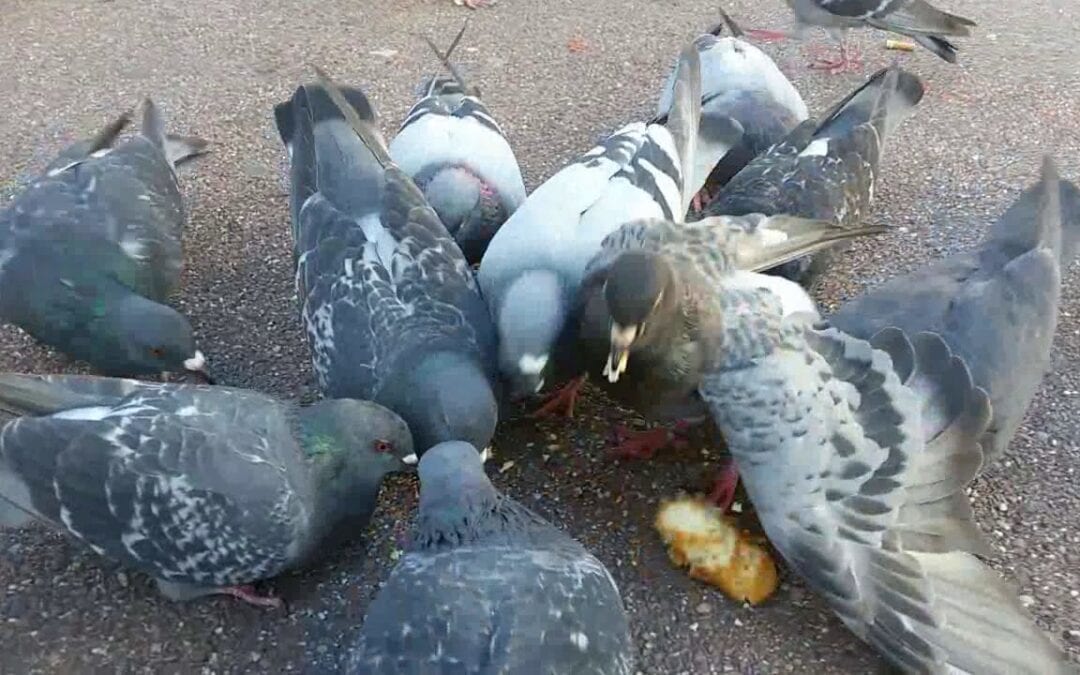
by Pigeon Patrol | Jun 14, 2021 | history of pigeons, MBCA, pet bird, Pigeon Control, Pigeon Droppings, Pigeon Patrol's Services, Pigeon Predators
The passenger pigeon (Ectopistes migratorius) is an extinct pigeon that was once widespread throughout North America. It was possibly the world’s most abundant bird in those times with the total population of almost three billion. The extinction of a bird that was once numbered in millions leaves biologists to wonder how it went extinct. The passenger pigeon is also called wild pigeon.
Passenger Pigeon Facts
- The overall length of an adult male was about 39 to 41 cm (15.4 to 16.1 in) and they weighed up to 260 and 340 g (9 and 12 oz).
- Adult females averaged 38 to 40 cm (14.9 to 15.7 in) in head-body length. It had dull colored feathers as compared to males down. However the female had a brown forehead that looked like a crown.
- Adult males had 175–210 mm (6.8–8.2 in) long tail females had 150–200 mm (5.9–7.8 in).
- The bird’s tarsus measured about 26–28 mm (1–1.1 in).
- The measurement of the male’s wing was about 196–215 mm (7.7–8.4 in) and it had 15–18 mm (0.6–0.7 in) long bill. The size of the bill was same in both males and females.
- Like many other pigeon species, the passenger pigeon was mainly recognized by its bluish-gray head and neck. There are iridescent feathers on the sides of the neck and they are bright brown to golden green in color. It goes bright when the light shines on it.
- The passenger pigeon’s tail had got some blackish spots that were clearly visible when the bird was flying.
- The legs and feet were red but the pigeon’s was completely black.
- Young pigeon appeared more like an adult female (in physical features) but unlike female it did not have spots on its wings.
- They had long pointed wings which were extremely helpful in flying fast. Passenger pigeons were adapted to not only fly fast but it could also maneuver itself rather quickly. Today pigeons lack this ability.Geographic Range & Habitat
- The passenger pigeon had occupied much of the North America including Atlantic coast in the east, Rocky Mountains, Great Plains, north of Mississippi, and south of Canada.
- They had made homes in primary habitats like deciduous forests. Passenger pigeons used to prefer forests that were abundant in white oaks.
- A large number of pigeons used to breed in the southern Ontario, Georgia, Oklahoma, Great Lakes states, North Carolina, Gulf Coast, northern Florida, and southern Pennsylvania. Passenger pigeon’s range extended as far as Bermuda, Mexico, Cuba, Ireland, and France.
- Passenger pigeons were noisy birds and they used to produce loud alarm calls such as cluck cluck or sometimes harsh sound like “kee-kee-kee-kee” or “tete! tete! tete!”.
- It was thought to be highly migratory traveling hours searching for food. The bird had long inspired the 19th century observers as it flew in flocks that could number in billions.
- The passenger pigeon’s flock was so enormous that one could not see the hint of sky while they flew.
- Pigeons used to fly as high as 1,300 ft (400 m) above the ground.
- During migration the speed at which the passenger pigeon used to travel was 62 mph (100 km/h).
- It had got the ability to maneuver itself in a narrow space and could also fly fast while going through the forests. However fast they might be in the air, passenger pigeons walked awkwardly on land.
- In those times passenger pigeons were believed to be social of all birds.
- When the entire flock needed to roost they found dense forests where the tree branches were thick enough to support the strain of million birds. Individual pigeons piled up on one another instead of sitting just next to it. As it turned out, if the branch was not strong it could break and the birds fell on land.
- They used to bathe in shallow water such as small ponds, streams, or lakes. Passenger pigeons typically bathe minutes after the day breaks.
- They used to drink once a day.
- The average lifespan of passenger pigeons was 15 years in captivity.

Feeding Ecology & Diet
- Passenger pigeons used to rely on mast that was produced from the trees of oaks and beeches. However they had a varied diet that changed seasonally.
- Passenger pigeon’s diet included grapes, mulberries, acorns, chestnuts, cherries, beechnuts, dogwoods, and pokeberries.
- In winter they relied more on nuts while in summer fruits made up much of their diet.
- Passenger pigeons also ate insects and invertebrates including worms, caterpillars, buckwheat, and snails.
- They are believed to fly 62 to 81 mi (100 to 130 km) a day from their roosting sites. Some of them could even travel 100 miles in a day.
- It could also hold many grains of corn or chestnuts in its crop. Passenger pigeons were able to eat 0.1 kg (0.22 lb) of acorns each day.
Reproductive Biology
- The nesting period lasted about 28 – 42 days. Biologists aren’t clear precisely how many times they used to mate in a year.
- Passenger pigeons used to gather on the breeding grounds from March to May.
- They had large colonies that could expand to thousands of acres but the average size was 120 acres (49 ha).
- The female chose a nesting site while the male held responsible for bringing materials and building a nest. It could take 2 – 4 days to build a complete nest. The male usually made nests with twigs.
- Nests were located 6.5 and 66 ft (2.0 and 20.1 m) above the ground and measured 6 in (15 cm) in width. The height of the nest was 2.4 in (6.1 cm) and the bowl was 0.75 in (1.9 cm) deep.
- Passenger pigeons used to mate for life.
- A female laid 1 – 2 white oval-shaped eggs. Eggs measured about 1.56 in (40 mm) by 32 in (34 mm) in size.
- Both parents incubated the eggs that lasted 12 – 14 days.
- Hatchlings were born blind and they are fed by parents for up to two weeks.
- The duration of a passenger pigeon’s nesting cycle is about one month.
- Predators of passenger pigeons were American weasels, raccoons, wolves, mountain lions, owls, hawks, bobcats, bears, American martens, and foxes. Cooper’s hawk was thought to be the main predator which could catch passenger pigeons in flight.
Pigeon Patrol Products & Services is the leading manufacturer and distributor of bird deterrent (control) products in Canada. Pigeon Patrol products have solved pest bird problems in industrial, commercial, and residential settings since 2000, by using safe and humane bird deterrents with only bird and animal friendly solutions. At Pigeon Patrol, we manufacture and offer a variety of bird deterrents, ranging from Ultra-flex Bird Spikes with UV protection, Bird Netting, 4-S Bird Gel and the best Ultrasonic and audible sound devices on the market today.
Voted Best Canadian wholesaler for Bird Deterrent products ten years in a row.
Contact us at 1- 877– 4– NO-BIRD, (604) 585-9279 or visit our website at www.pigeonpatrol.ca
Pigeon/Pigeon Patrol / Pigeons Roosting / Vancouver Pigeon Control /Bird Spikes / Bird Control / Bird Deterrent / Pigeon Deterrent? Surrey Pigeon Control / Pest /Seagull deterrent / Vancouver Pigeon Blog / Birds Inside Home / Pigeons in the cities / Ice Pigeons/ What to do about pigeons/ sparrows , Damage by Sparrows, How To Keep Raccoons Away, Why Are Raccoons Considered Pests/ De-fence / Pigeon Nesting/ Bird Droppings / Pigeon Dropping/ woodpecker control/ Professional Bird Control Company/ Keep The Birds Away/ Birds/rats/ seagull/pigeon/woodpecker/ dove/sparrow/pidgeon control/pidgeon problem/ pidgeon control/flying rats/ pigeon Problems/ bird netting/bird gel/bird spray/bird nails/ bird guard
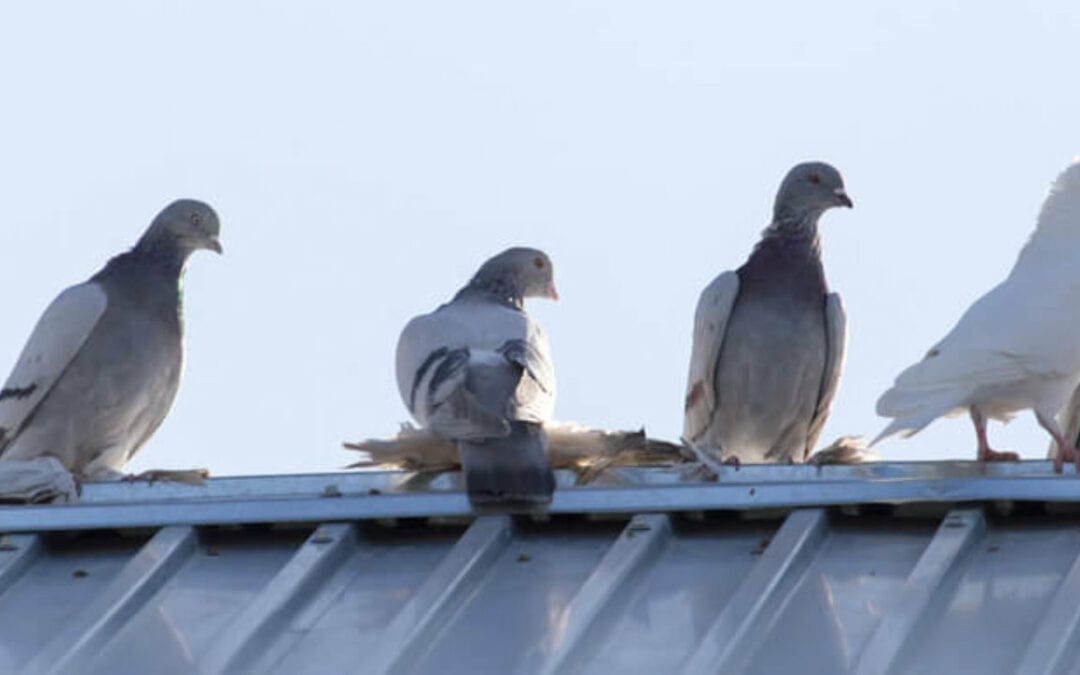
by Pigeon Patrol | Jun 14, 2021 | Bird Spikes, Columbidae, Doves, Pigeon Predators, Pigeon Spikes, Pigeons, Pigeons in the News
Getting rid of pigeons on your own isn’t easy. These pest birds have an inbred homing instinct that makes them feel attached to their established roosting and nesting sites. Plus, mating pairs can hatch as many as four broods a year, so a small pigeon problem can quickly turn into a disaster. Pigeons will resort to laying eggs on bare surfaces if need be, so getting rid of pigeons isn’t as simple as removing their nests. Fortunately, Bird Barrier offers a number of high-quality pigeon control products that can effectively resolve any type of pigeon problem.

Problems Caused by Pigeons Sitting and Nesting
Pigeons are the most common type of pest bird in North America and they cause a variety of problems at all kinds of buildings, from airports to manufacturing facilities to power plants and the rooftops of stores, offices, and homes. Because pigeon droppings contain uric acid, which is highly corrosive, pigeons can cause a great deal of damage in a short amount of time. Feral pigeons are responsible for untold millions of dollars of damage each year in urban areas. Here are a few of the other most common pigeon roosting problems (and reasons why people need effective pigeon deterrents):
- Pigeons (and pigeon waste) can hurt the image of a business or commercial enterprise as they leave a bad impression
- Collected debris from roosting pigeon flocks can cause water damage by blocking up gutters and drains
- Roosting pigeons often cause extensive damage to air conditioning units and other rooftop machinery
- Droppings create hazardous surfaces that lead to slip and fall liability
- Bacteria, fungal agents, and ectoparasites found in pigeon droppings can pose a health risk.
Tell us about your pigeon problem and we’ll point you to the solutions you need.
Pigeon Control Solutions: Pigeon Spikes, Netting, Birth Control and More
Because pigeon prevention can be easier than pigeon removal, we at Bird Barrier always recommend proactive use of deterrent products that will cause these birds to roost elsewhere, so their homing instinct isn’t bringing them back to your property!
If you already have a flock of pigeons on your property, the first line of defense, as with all pest birds, is removing all sources of food and water from the site. However, you will need to take additional steps to control an established pigeon problem. Bird Barrier offers a number of solutions to deter and repel pigeons, from pigeon spikes to exclusion netting to birth control and beyond. With the right pigeon control products, you can solve any pigeon problem for good.
How to Select the Right Pigeon Deterrents For Any Situation
The most effective approaches to pigeon control and prevention include:
- Exclusion Netting
- Electric Shock
- Spikes, Optical Gel, Coil
- Pigeon Reproductive Control
- Audio, Visual, and Taste Deterrents

by Pigeon Patrol | Jun 7, 2021 | Pigeon Patrol's Services, Pigeon Predators, Pigeon Spikes, Raccoons, Sparrows, UltraSonic Bird Control
Belgium is regarded as the home of pigeon racing, with approximately 60,000 pigeon fanciers in a population of 10 million.

In a standard race, as many as 5,000 tagged pigeons are transported to a single location and released.
When the pigeon arrives home his owner removes the tag and gets it time-stamped by a sealed timing device, designed so that it cannot be tampered with.
Homing pigeons have a long and distinguished history. In 1815, a pigeon belonging to the financier Nathan Rothschild carried the news of Napoleon’s defeat at Waterloo to London.
A homing pigeon belonging to the US Army Signal Corps in 1918 was awarded the French Croix de Guerre. The bird, named Cher Ami, is currently mounted in the Smithsonian’s Price of Freedom exhibit in the US.
According to Tucker Daniel, and his fellow enthusiast Kevin Barry, some pigeon fanciers of note include footballer Duncan Ferguson, actor Paul Newman and boxer Mike Tyson. (Iron Mike? Really?) For more information see www.racingpigeon.ie or www.isrf.ie
Source
Pigeon Patrol Products & Services is the leading manufacturer and distributor of bird deterrent (control) products in Canada. Pigeon Patrol products have solved pest bird problems in industrial, commercial, and residential settings since 2000, by using safe and humane bird deterrents with only bird and animal friendly solutions. At Pigeon Patrol, we manufacture and offer a variety of bird deterrents, ranging from Ultra-flex Bird Spikes with UV protection, Bird Netting, 4-S Bird Gel and the best Ultrasonic and audible sound devices on the market today.
Voted Best Canadian wholesaler for Bird Deterrent products ten years in a row.
Contact us at 1- 877– 4– NO-BIRD, (604) 585-9279 or visit our website at www.pigeonpatrol.ca
Pigeon/Pigeon Patrol / Pigeons Roosting / Vancouver Pigeon Control /Bird Spikes / Bird Control / Bird Deterrent / Pigeon Deterrent? Surrey Pigeon Control / Pest /Seagull deterrent / Vancouver Pigeon Blog / Birds Inside Home / Pigeons in the cities / Ice Pigeons/ What to do about pigeons/ sparrows , Damage by Sparrows, How To Keep Raccoons Away, Why Are Raccoons Considered Pests/ De-fence / Pigeon Nesting/ Bird Droppings / Pigeon Dropping/ woodpecker control/ Professional Bird Control Company/ Keep The Birds Away/ Birds/rats/ seagull/pigeon/woodpecker/ dove/sparrow/pidgeon control/pidgeon problem/ pidgeon control/flying rats/ pigeon Problems/ bird netting/bird gel/bird spray/bird nails/ bird guard
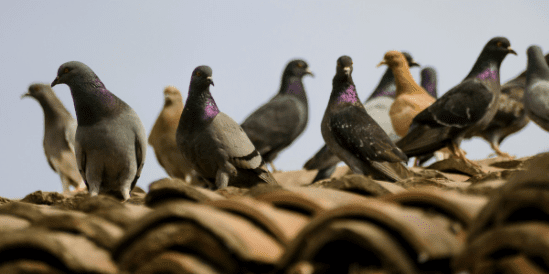
by Pigeon Patrol | May 31, 2021 | Animal Deterrent Products, Bird Deterrent Products, Bird Law, Bird Netting, Pigeon Patrol's Services, Pigeon Predators, Pigeon Spikes
A thick layer of bird droppings that have built up over the last decade from pigeons living in the broken Christ Church Cathedral will end up in landfill instead of being recycled into fertiliser.
Up to two tonnes of pigeon poo has accumulated since the devastating February 2011 earthquake.
Christ Church Cathedral Reinstatement project director Keith Paterson said the pigeons were “a bit of liability” and certainly not their “best friends”.
Few people have entered the building since the quake, but drones gave the reinstatement group an estimate of how much damage the pigeons had caused.
The project team aimed to reuse as much of the building material as possible.
Paterson estimated about half of the material would be reused to finish the reinstated cathedral, but much of the rubble inside would be too damaged.
Christchurch consultancy Soil Matters, which turns waste products from the dairy industry into fertiliser, was approached last year with the idea of potentially recycling the tonnes of pigeon droppings and broken limestone into something useful.

General manager Rik Mulder said his team came up with the idea last June to recycle nutrients including nitrogen, phosphorous and calcium containedin the pigeon droppings and limestone, once they had been tested and deemed safe.
The company had planned to crush the limestone and pigeon droppings to a fine powder and apply it to paddocks in local North Canterbury farms.
But the company learned it would need a resource consent for the crushing process, which the reinstatement group said would be too costly and take too long to obtain.
It led to the decision to dispose the material through “a more conventional solution”, using contractors to take it to landfill.
“I don’t rate the [environmental] sustainability any more highly than I do the cost or the heritage requirements,” Paterson said.
“They’re all just things that are there that we have to process and do in the most economical way.”
Mulder said he understood the reinstatement group had to make a call, but felt the lengthy process of obtaining a resource consent stopped innovative thinking.
“Shutting down” such projects did not encourage people to think sustainably and “outside the box”, he said.
“We are restrained in our efforts to try new things.”
Environment Canterbury (ECan) consent planning manager Aurora Grant said a consent was required because the pigeon droppings and limestone were classified as a contaminant.
Having a consent would allow ECan to understand the “effects of the activity and ensure the proposed activity is done in a way that has environmentally sustainable outcomes”.
Pathways existed to allow innovative and sustainable use of resources and not many were prohibited in the regional plans, she said.
The $153 million cathedral restoration is expected to be finished by mid-2027, earlier than initially proposed. The project, which began in late 2018, was initially expected to be completed in early 2028.
But on Thursday Stuff revealed the Anglicans’ ruling body may have to change its approval terms for the restoration to avoid work stopping in October if more funds cannot be found.
Workers are currently stabilising the cathedral to make it safe enough to work on.
The clean-up process will start with remote controlled machines going into the ruins to start removing bigger pieces of material, expected to start in October.
It will be another six to 12 months before anyone can go inside.
“We’re constantly reassessing how we’ll access the building from a safety perspective,” Paterson said.
By the end of the stabilisation stage, Paterson said the building would be about 34 per cent of the current seismic building code.
Source
Pigeon Patrol Products & Services is the leading manufacturer and distributor of bird deterrent (control) products in Canada. Pigeon Patrol products have solved pest bird problems in industrial, commercial, and residential settings since 2000, by using safe and humane bird deterrents with only bird and animal friendly solutions. At Pigeon Patrol, we manufacture and offer a variety of bird deterrents, ranging from Ultra-flex Bird Spikes with UV protection, Bird Netting, 4-S Bird Gel and the best Ultrasonic and audible sound devices on the market today.
Voted Best Canadian wholesaler for Bird Deterrent products ten years in a row.
Contact us at 1- 877– 4– NO-BIRD, (604) 585-9279 or visit our website at www.pigeonpatrol.ca
Pigeon/Pigeon Patrol / Pigeons Roosting / Vancouver Pigeon Control /Bird Spikes / Bird Control / Bird Deterrent / Pigeon Deterrent? Surrey Pigeon Control / Pest /Seagull deterrent / Vancouver Pigeon Blog / Birds Inside Home / Pigeons in the cities / Ice Pigeons/ What to do about pigeons/ sparrows , Damage by Sparrows, How To Keep Raccoons Away, Why Are Raccoons Considered Pests/ De-fence / Pigeon Nesting/ Bird Droppings / Pigeon Dropping/ woodpecker control/ Professional Bird Control Company/ Keep The Birds Away/ Birds/rats/ seagull/pigeon/woodpecker/ dove/sparrow/pidgeon control/pidgeon problem/ pidgeon control/flying rats/ pigeon Problems/ bird netting/bird gel/bird spray/bird nails/ bird guard
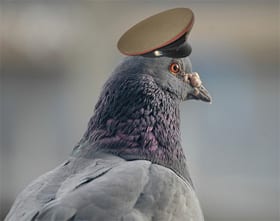
by Pigeon Patrol | May 25, 2021 | Bird Law, Columbidae, pet bird, Pigeon Predators, Pigeons in the News, Sparrows
Found in a field in mid-September by a couple out hiking in Ingersheim, northeastern France, the message was sent from one German military officer to another in 1910, when the area was still part of Germany, according to Dominique Jardy, curator of the nearby Linge Memorial museum.
Jardy told CNN the message was folded up inside a small aluminum capsule and the script is difficult to decipher.
A German friend, whom Jardy asked to translate the message, said the officer, who was based in the town of Colmar, is recounting German military exercises in the area.
“Platoon Potthof receives fire as they reach the western border of the parade ground, platoon Potthof takes up fire and retreats after a while,” the message reads, according to the AFP news agency. “In Fechtwald half a platoon was disabled. Platoon Potthof retreats with heavy losses.”
These losses are an estimate based on the war games rather than actual deaths, said Jardy, explaining that this is common practice during military exercises.
Difficulty in reading the script means there is some debate about whether the message was sent in 1910 or 1916. However, Jardy is convinced it is the former because he is not aware of any military maneuvers around Colmar in 1916, and the note uses terms specific to military exercises rather than warfare.
Artifacts like the message are almost never found today, Jardy said.
“It’s really very, very, very rare,” he said. “It’s really exceptional.”
The message will now go on display at the Linge Memorial museum, which tells the story of a battle between French and German forces in 1915.
France ceded Ingersheim and the surrounding area to Germany in 1871 after the Franco-German war, but the territory changed hands again in 1918 with the Allied victory in World War I.
Pigeon Patrol Products & Services is the leading manufacturer and distributor of bird deterrent (control) products in Canada. Pigeon Patrol products have solved pest bird problems in industrial, commercial, and residential settings since 2000, by using safe and humane bird deterrents with only bird and animal friendly solutions. At Pigeon Patrol, we manufacture and offer a variety of bird deterrents, ranging from Ultra-flex Bird Spikes with UV protection, Bird Netting, 4-S Bird Gel and the best Ultrasonic and audible sound devices on the market today.
Voted Best Canadian wholesaler for Bird Deterrent products ten years in a row.
Contact us at 1- 877– 4– NO-BIRD, (604) 585-9279 or visit our website at www.pigeonpatrol.ca
Pigeon/Pigeon Patrol / Pigeons Roosting / Vancouver Pigeon Control /Bird Spikes / Bird Control / Bird Deterrent / Pigeon Deterrent? Surrey Pigeon Control / Pest /Seagull deterrent / Vancouver Pigeon Blog / Birds Inside Home / Pigeons in the cities / Ice Pigeons/ What to do about pigeons/ sparrows , Damage by Sparrows, How To Keep Raccoons Away, Why Are Raccoons Considered Pests/ De-fence / Pigeon Nesting/ Bird Droppings / Pigeon Dropping/ woodpecker control/ Professional Bird Control Company/ Keep The Birds Away/ Birds/rats/ seagull/pigeon/woodpecker/ dove/sparrow/pidgeon control/pidgeon problem/ pidgeon control/flying rats/ pigeon Problems/ bird netting/bird gel/bird spray/bird nails/ bird guard
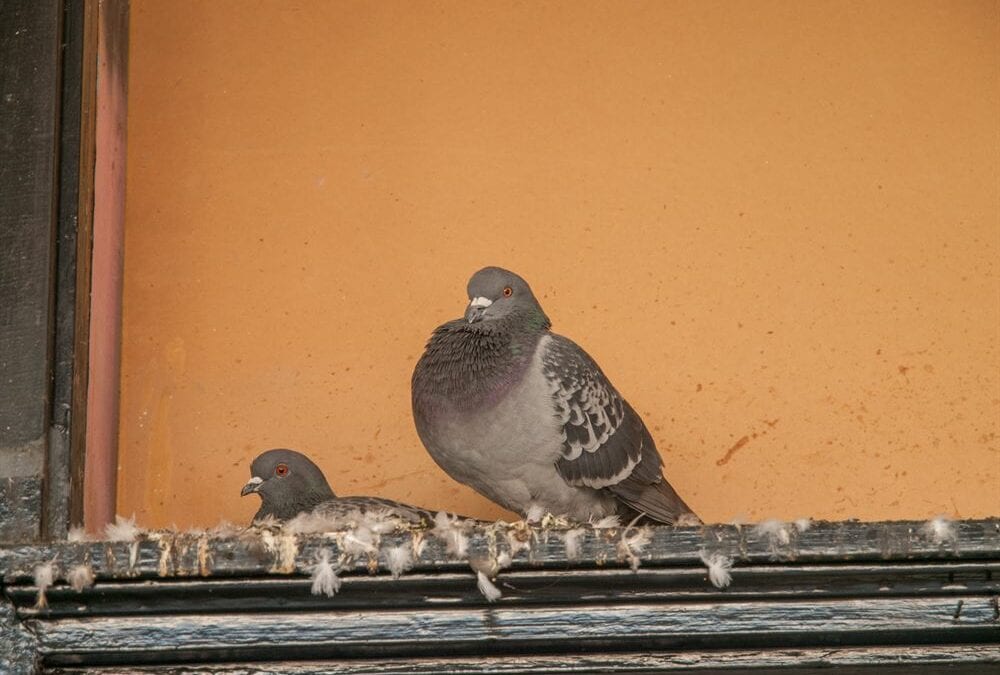
by Pigeon Patrol | May 17, 2021 | Bird Netting, Pigeon Patrol's Services, Pigeon Predators, Pigeon Spikes, Pigeons, Pigeons in the News
When pigeons live on our buildings and deface it, it is possible to remove the birds by excluding them (netting) from the area, but we don’t need to kill them. You should make it a priority to clean the area’s they have been since pigeons do carry mites and you don’t want the mites going in your building when the pigeons are gone.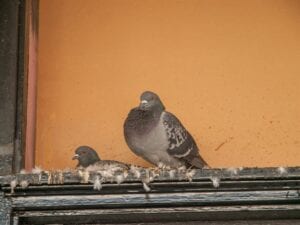
Pigeons are frequently called rats with wings. The term “rats with wings” came from a 1980 play, “Stardust Memories” starring Woody Allen. Allen used the term in the movie and apparently someone with a vested interest in misleading the public decided to use it in a campaign to drum up business for pigeon control. The facts are just the opposite. Yes, there are some diseases that can be transmitted by pigeons, but no more so than any other bird, including such popular pets as parakeets, canaries, etc.
They do have their attributes. During World War I, pigeons carried thousands of messages that saved many hundreds of lives. In World War II pigeons continued to be used. Radios were frequently not working due to damage or when unfavorable terrain rendered them almost useless. Pigeons continued to fly through enemy fire, and amazingly 95% of them completed their missions. One pigeon in particular, named “Cher Ami” was a World War I Carrier Pigeon, one of 600 birds owned and flown by the U.S. Signal Corps. Cher Ami was originally bred by the British Signal Corps. He was transferred to the Americans after the war on Oct. 27, 1918.
Cher Ami delivered 12 important messages within the American sector at Verdun, France. On his last mission, Cher Ami, shot through the breast by enemy fire, managed to return to his loft. A message capsule was found dangling from the ligaments of one of his legs that had also been shattered by enemy fire. The message he carried was from Major Whittlesey’s “Lost Battalion” of the 77th Infantry Division that had been isolated from other American forces. Just a few hours after the message was received, 194 survivors of the battalion were safe behind American lines. Cher Ami was awarded the French “Croix de Guerre” with Palm for his heroic service between the forts of Verdun. He died in 1919 as a result of his battle wounds. Cher Ami was later inducted into the Racing Pigeon Hall of Fame in 1931 and received a gold medal from the Organized Bodies of American Racing Pigeon Fanciers in recognition of his extraordinary service during World War I.
Pigeons continued their valiant service during World War II and the Korean War. The Dickin Medal for Valor, an award only for animals, was given to 31 pigeons in World War II, more than any other animal. (The next closest animals were dogs, with 8 medals).
Source
Pigeon Patrol Products & Services is the leading manufacturer and distributor of bird deterrent (control) products in Canada. Pigeon Patrol products have solved pest bird problems in industrial, commercial, and residential settings since 2000, by using safe and humane bird deterrents with only bird and animal friendly solutions. At Pigeon Patrol, we manufacture and offer a variety of bird deterrents, ranging from Ultra-flex Bird Spikes with UV protection, Bird Netting, 4-S Bird Gel and the best Ultrasonic and audible sound devices on the market today.
Voted Best Canadian wholesaler for Bird Deterrent products ten years in a row.
Contact us at 1- 877– 4– NO-BIRD, (604) 585-9279 or visit our website at www.pigeonpatrol.ca
Pigeon/Pigeon Patrol / Pigeons Roosting / Vancouver Pigeon Control /Bird Spikes / Bird Control / Bird Deterrent / Pigeon Deterrent? Surrey Pigeon Control / Pest /Seagull deterrent / Vancouver Pigeon Blog / Birds Inside Home / Pigeons in the cities / Ice Pigeons/ What to do about pigeons/ sparrows , Damage by Sparrows, How To Keep Raccoons Away, Why Are Raccoons Considered Pests/ De-fence / Pigeon Nesting/ Bird Droppings / Pigeon Dropping/ woodpecker control/ Professional Bird Control Company/ Keep The Birds Away/ Birds/rats/ seagull/pigeon/woodpecker/ dove/sparrow/pidgeon control/pidgeon problem/ pidgeon control/flying rats/ pigeon Problems/ bird netting/bird gel/bird spray/bird nails/ bird guard











